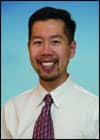by Benson H. Wong, DDS
Orthodontists should be more than “cosmedontists”

Of course, most patients who come to see us are most concerned with improving their smile, but it should be our responsibility to educate and inform our patients of the other benefits that orthodontic treatment can offer. How about proper bite, proper function, facial aesthetics, and jaw position and comfort?
In the initial interviews with our patients, a great deal of information can be discovered that a clinical examination will never reveal. As health care providers, we need to talk to our patients to see how we can help them, and I do not mean just straightening their teeth for a beautiful smile. As health care providers, we should take the time in our offices and talk to our patients more to help them achieve optimum oral health.
I had the great fortune of taking the Roth/Williams course in functional occlusion in orthodontics immediately after completing my residency in 1995. The information I learned from Ronald Roth, DDS, MS, and Robert Williams, DDS, MS, has given me a solid foundation for my diagnostic and clinical abilities.
With the recent passing of Dr Roth, I have begun to look even more closely at my orthodontic treatment results as a way of honoring the legacy of a brilliant orthodontist. Dr Roth was a very passionate man who felt so strongly about what he taught that he was willing to stick his neck out, even if what he said was contrary to what the popular belief in orthodontics was at any particular time. His message always remained the same: Properly positioned teeth and jaws with good tooth form and proper anterior and canine disclusion will have a stable result that will increase the longevity of the teeth and be more comfortable for our patients. The dental and facial aesthetics will come along for the ride.
All too often, I see an adult patient who had orthodontic treatment previously and wants to straighten his or her teeth again. After interviewing the patient to find out what other concerns or problems may be present, I find out about frequent headaches, TMJ clicking, muscle soreness, periodontal concerns, or an “uncomfortable bite.” Upon clinical evaluation, I may find some severe tooth wear due to lack of a proper functional occlusion.
It is our responsibility as specialists of the alignment and fit of the teeth to inform patients of these problems, then help them find the best solution to address these problems. How can we find out about soreness or headaches without asking our patients? I have even had patients who answered that they had no headaches on their health histories, but upon interviewing them I discovered that indeed, they did have a problem with frequent and severe headaches. The most common answer as to why the headaches were not mentioned on the health history? “I did not think it would pertain to an orthodontic evaluation.” Again, how do we know if we do not ask?
Did we choose an orthodontic residency to learn to be “cosmedontists?” There is more to orthodontics than the cosmetic alignment of the anterior teeth. As dentists, we are physicians of the mouth. As orthodontists (which is, by the way, a specialty of dentistry), we are specialists of the alignment of the teeth, the bite, and the jaws. And there is one other thing that happens to be attached to the teeth and jaws that is often overlooked: The temporomandibular joint.
Let’s not forget an important message from Dr Roth’s many years of teaching: Patients must come first. We must strive to deliver the best treatment for our patients that we can offer. We must help them achieve their goal of a beautiful smile, and also make sure that the occlusion and the jaw joints function properly together. Just because they do not ask for it does not mean we can ignore it. Let’s treat the people we see and not just the teeth in their mouths. Let’s be orthodontists, not just “cosmedontists.”
Benson H. Wong, DDS, is an orthodontist who has been in private practice in the San Francisco Bay Area for the past 10 years. He attended dental school at the University of California San Francisco and completed his orthodontic residency at New York University. He has completed courses at the Roth/Williams Center for Functional Occlusion in Burlingame, Calif, and the Schuster Center for Professional Development in Scottsdale, Ariz. He can be reached at (650) 588-7936 or [email protected].










